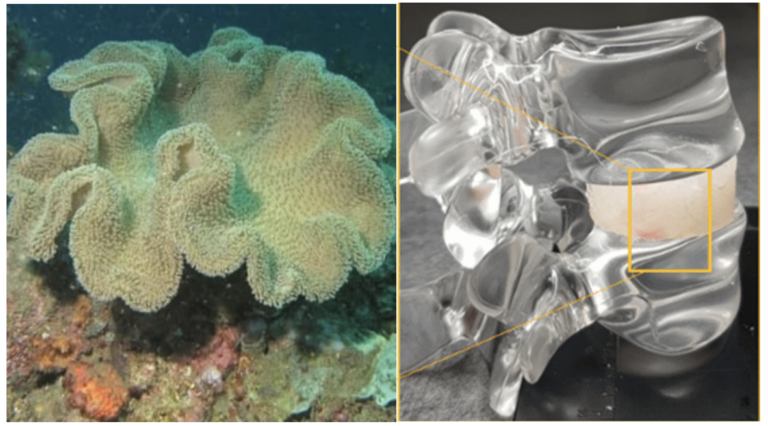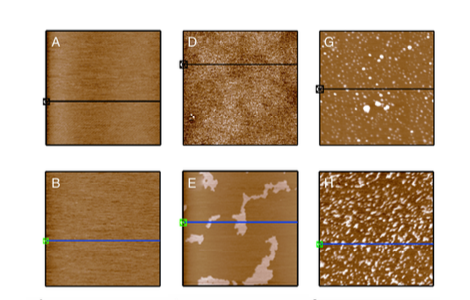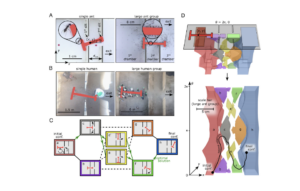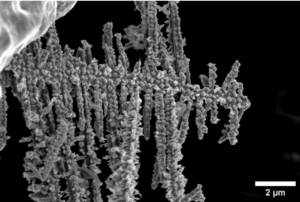Weizmann (Israël) : après un conditionnement olfactif pendant le sommeil, les participants à l'étude fument moins
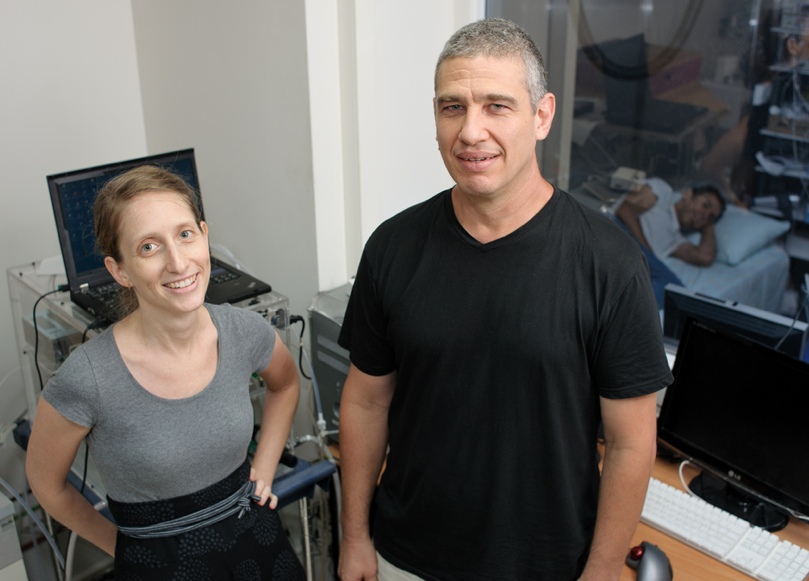
[:fr]Une nouvelle recherche menée à l’Institut Weizmann des Sciences suggère que certains types de conditionnements appliqués durant le sommeil pourraient nous inciter à changer notre comportement. Les chercheurs ont exposé des fumeurs, pendant leur sommeil, à une combinaison d’odeurs, par exemple l’odeur de cigarettes avec celle d’œufs ou de poissons pourris ; ils leur ont ensuite demandé de noter le nombre de cigarettes qu’ils ont fumées au cours de la semaine suivante. Cette étude a révélé une réduction notable du nombre de cigarettes fumées par les personnes mises sous conditionnement olfactif pendant leur sommeil.
La docteure Anat Arzi, du groupe du professeur Noam Sobel du département de Neurologie de l’Institut Weizmann, a déjà montré qu’un conditionnement associatif – comme l’apprentissage suivant la théorie de Pavlov, selon laquelle le cerveau est entraîné à associer inconsciemment un stimulus avec un autre – pourrait se faire durant le sommeil en utilisant les odeurs comme stimulus non-conditionné. Bien que les volontaires n’aient eu aucun souvenir des odeurs respirées pendant la nuit, leurs inhalations les ont trahis. Le matin suivant, ils ont réagi inconsciemment à des stimuli qui avaient été associés à de mauvaises odeurs, en prenant de courtes respirations peu profondes. La docteure Arzi explique que l’utilisation des odeurs joue un rôle important, car contrairement à d’autres types de stimuli sensoriels, même de très mauvaises odeurs ne nous réveillent pas.
La recherche actuelle a été menée sur 66 volontaires qui voulaient cesser de fumer, mais qui ne suivaient aucun traitement pour cela. On avait choisi pour cette étude des fumeurs de cigarettes parce que leur comportement peut être facilement quantifié et parce que le ‘stimulus cible’ était aussi une odeur. Après avoir répondu à des questionnaires sur leur dépendance au tabac, ceux qui devaient passer la nuit sur place ont été placés dans le laboratoire spécialisé pour le sommeil, où leur comportement nocturne a été soigneusement contrôlé. A certains stades du sommeil, ils ont été exposés, à plusieurs reprises pendant la nuit, à deux odeurs (cigarette + mauvaise odeur), l’une juste après l’autre. Bien que, le matin, ils ne se rappelaient pas avoir respiré ces odeurs, les sujets ont déclaré avoir fumé moins de cigarettes au cours de la semaine suivante. En revanche, les sujets ayant été exposés à ces couples d’odeurs en état de veille n’ont pas réduit par la suite le nombre de cigarettes fumées, et il en a été de même pour les dormeurs ayant été exposés aux odeurs de cigarettes et aux mauvaises odeurs de manière séparée, à des moments arbitraires.
Les chercheurs ont remarqué que le groupe ayant les meilleurs résultats, soit en moyenne 30 % moins de cigarettes, était composé de ceux qui avaient été exposés aux odeurs durant la phase 2, celle du sommeil sans mouvements oculaires rapides (sommeil lent léger). Ceci soutient les résultats précédents de ce groupe, suggérant que la plupart du temps nous oublions le contenu de nos rêves, alors que le conditionnement qui entre dans notre subconscient durant la phase de « consolidation de la mémoire » peut persister.
Le professeur Sobel et la docteure Arzi suggèrent qu’une situation olfactive pourrait être une direction prometteuse pour la recherche sur la dépendance, parce que le centre de récompense du cerveau, qui est impliqué dans des comportements de dépendance comme le tabagisme, est fortement lié aux zones traitant les odeurs. Non seulement une partie de ces régions restent actives lorsque nous dormons, mais les informations qu’elles absorbent pourraient même être améliorées durant le sommeil.
La docteure Arzi ajoute : « Nous n’avons pas encore inventé un moyen de cesser de fumer pendant le sommeil. Ceci nécessiterait une recherche d’un genre complètement différent. Ce que nous avons montré, c’est qu’un tel conditionnement peut avoir lieu durant le sommeil, et qu’il peut mener à de véritables changements comportementaux. Notre odorat pourrait être une porte d’entrée vers notre cerveau endormi, et pourrait à l’avenir nous aider à changer les comportements d’accoutumance ou les comportements dangereux. »
La recherche du professeur Noam Sobel est financée par : Norman and Helen Asher Center for Brain Imaging, qu’il dirige ; Centre Nella et Leon Benoziyo des Neurosciences, qu’il dirige ; Carl and Micaela Einhorn-Dominic Institute for Brain Research, qu’il dirige ; Nadia Jaglom Laboratory for the Research in the Neurobiology of Olfaction ; la Fondation Adelis ; James S. McDonnell Foundation – 21st Century Science Scholar in Understanding Human Cognition Program ; Mr. and Mrs. H. Thomas Beck ; Minerva Foundation ; le European Research Council ; Nathan and Dora Oks, France ; Mike and Valeria Rosenbloom through the Mike Rosenbloom Foundation ; et la succession de David Levidow.
L’Institut Weizmann des Sciences situé à Rehovot, en Israël, est l’un des centres de recherche scientifique pluridisciplinaire parmi les plus avancés du monde. Cet institut, réputé pour ses vastes recherches en sciences naturelles et exactes, emploie un grand nombre de chercheurs scientifiques, ainsi que des étudiants, des techniciens et autres membres du personnel. L’Institut concentre ses efforts de recherche sur les nouveaux moyens de lutte contre la maladie et la faim, l’examen de questions primordiales dans les mathématiques et l’informatique, l’exploration de la physique de la matière et de l’univers, la création de nouveaux matériaux et le développement de nouvelles stratégies pour la protection de l’environnement.
Publication dans The Journal of Neuroscience, 12 novembre 2014[:en]New Weizmann Institute research may bring the idea of sleep learning one step closer to reality. The research suggests that certain kinds of conditioning applied during sleep could induce us to change our behavior. The researchers exposed smokers to pairs of smells – cigarettes together with that of rotten eggs or fish – as the subjects slept, and then asked them to record how many cigarettes they smoked in the following week. The study revealed a significant reduction in smoking following conditioning during sleep.
Dr. Anat Arzi in the group of Prof. Noam Sobel of the Weizmann Institute’s Neurobiology Department had previously shown that associative conditioning – Pavlovian-type learning in which the brain is trained to subconsciously associate one stimulus with another – could occur during sleep if odors were used as the unconditioned stimulus. Though the volunteers did not remember the odors they had smelled in the night, their sniffing gave them away: The next morning they reacted unconsciously to tones that had been paired with bad smells by taking short, shallow breaths. The use of smell, explains Arzi, is central: As opposed to other types of sensory stimulus, even very bad odors do not wake us.
The current study was performed on 66 volunteers who wanted to quit smoking, but were not being treated for the problem. Cigarette smoking was chosen for the study because it is behavior that can be simply quantified and the target stimulus was another smell. After filling out questionnaires about their smoking habit, those in the sleep group spent a night in the department’s special sleep lab, in which their sleep patterns were closely monitored. At certain stages of sleep, they were exposed to paired smells – cigarettes and a foul odor – one right after the other, repeatedly throughout the night. Although they did not remember smelling the odors the next morning, the subjects reported smoking less over the course of the next week. In contrast, subjects who were exposed to the paired smells when awake did not smoke less afterward, nor did sleepers who were exposed to cigarette smells and the two aversive smells unpaired, at random times.
The scientists noted that the group with the best results – an average of 30% fewer cigarettes – was comprised of those who had been exposed to the smells during stage 2, non-REM sleep. This supported the group’s earlier findings which suggested that we mostly forget what happens in our dreams, but conditioning that makes its way into our subconscious during the “memory-consolidation” stage may stick.
Sobel and Arzi suggest that olfactory conditioning may be a promising direction for addiction research because the brain’s reward center, which is involved in such addictive behavior as smoking, is closely interconnected with the regions that process smell. Some of these regions not only remain active when we sleep, the information they absorb may even be enhanced in slumber.
Arzi: “We have not yet invented a way to quit smoking as you sleep. That will require a different kind of study, altogether. What we have shown is that conditioning can take place during sleep, and this conditioning can lead to real behavioral changes. Our sense of smell may be an entryway to our sleeping brain that may, in the future, help us to change addictive or harmful behavior.”
Prof. Noam Sobel’s research is supported by the Norman and Helen Asher Center for Brain Imaging, which he heads; the Nella and Leon Benoziyo Center for Neurosciences, which he heads; the Carl and Micaela Einhorn-Dominic Institute for Brain Research, which he heads; the Nadia Jaglom Laboratory for the Research in the Neurobiology of Olfaction; the Adelis Foundation; the James S. McDonnell Foundation 21st Century Science Scholar in Understanding Human Cognition Program; Mr. and Mrs. H. Thomas Beck; the Minerva Foundation; the European Research Council; Nathan and Dora Oks, France; Mike and Valeria Rosenbloom through the Mike Rosenbloom Foundation; and the estate of David Levidow.
The Weizmann Institute of Science in Rehovot, Israel, is one of the world’s top-ranking multidisciplinary research institutions. Noted for its wide-ranging exploration of the natural and exact sciences, the Institute is home to scientists, students, technicians and supporting staff. Institute research efforts include the search for new ways of fighting disease and hunger, examining leading questions in mathematics and computer science, probing the physics of matter and the universe, creating novel materials and developing new strategies for protecting the environment.
Publication in The Journal of Neuroscience, november, 12th 2014[:]


